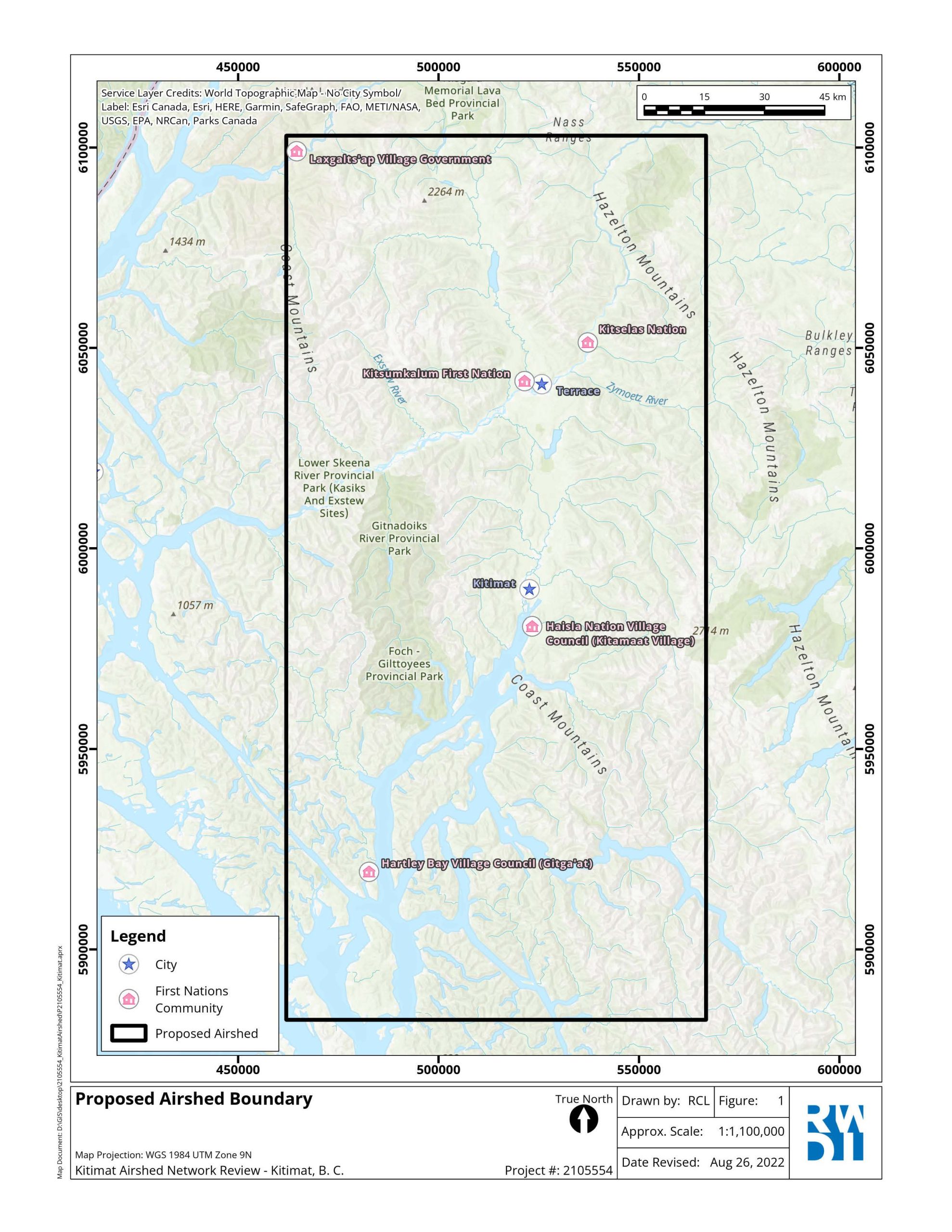The proposed airshed builds off the airshed as defined in the ozone modelling work by Ben Weinstein, which is based on natural physical barriers. The proposed airshed boundary was selected to include all potential impacts from reasonably anticipated future emitting (industrial and other) activities in the region. The possible effects considered include human health, vegetation, terrestrial ecosystems, and aquatic ecosystems. The proposed boundary was selected to include all geographic areas in which predicted concentrations would trigger management actions (a much lower threshold than exceedances) for all receptor types. In choosing a boundary, consideration was also given to legal and administrative boundaries and airflow over waterways and potentially populated areas. Finally, the airshed was defined as a regular rectangle that can be used as a standard dispersion modelling domain to provide consistency and comparability across future modelling activities.
